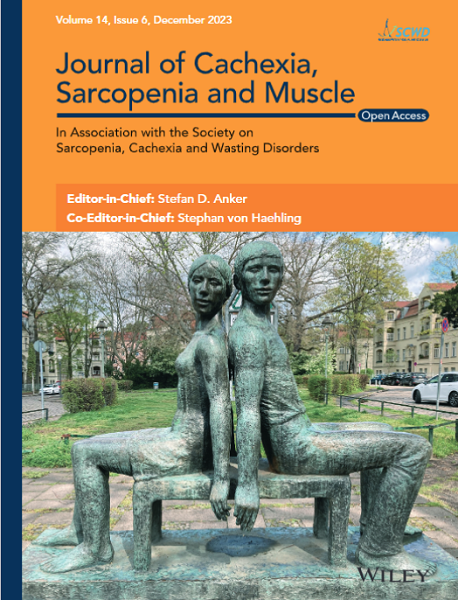CSE/H2S/SESN2 Signalling Mediates the Protective Effect of Exercise Against Immobilization-Induced Muscle Atrophy in Mice
Abstract
Background
Hydrogen sulphide (H2S), a gasotransmitter synthesized by cystathionine-γ-lyase (CSE), exhibits antioxidant properties and may mimic exercise-induced muscle protection. However, its mechanistic role in muscle atrophy and exercise intervention remains unclear.
Methods
Six-month-old male wild-type (WT) and SESN2 knockout (SESN2−/−) C57BL/6J mice were subjected to a 2-week hindlimb immobilization, followed by combined resistance and aerobic exercise or pharmacological intervention using the H2S donor NaHS (30 μmol/kg) or the CSE inhibitor DL-propargylglycine (PAG, 50 mg/kg). In vitro, C2C12 myotubes were treated with H2O2 and NaHS to assess oxidative stress injury. Muscle mass, cross-sectional area (CSA), collagen deposition and oxidative stress markers were evaluated via histology, Western blot and immunofluorescence.
Results
Compared with the immobilization (IM) group, mice receiving a 2-week combined exercise intervention (IM + EX) exhibited significantly increased gastrocnemius muscle mass/body weight (10.86 ± 0.62 vs. 8.56 ± 1.61, p < 0.01), enlarged muscle fibre CSA (1628 ± 265 μm2 vs. 905.5 ± 88.52 μm2, p < 0.01) and reduced collagen deposition as indicated by Sirius red staining (collagen-positive area: 2.86% ± 1.12% vs. 7.06 ± 1.18%, p < 0.001). Pharmacological inhibition of CSE with PAG significantly attenuated these exercise-induced improvements (muscle mass/body weight: 10.22 ± 0.59, CSA: 1139 ± 96.21 μm2, collagen area: 5.04 ± 0.66%, all p < 0.05 vs. IM + EX). Conversely, administration of the H2S donor NaHS mimicked the protective effects of exercise, increasing muscle mass/body weight (8.94 ± 0.51), CSA (1474 ± 176.1 μm2) and reducing collagen accumulation (collagen area: 3.04 ± 0.74%, all p < 0.05 vs. IM). In vitro, NaHS treatment (30 μM) significantly reversed H2O2-induced reductions in myotube diameter (19.16 ± 0.91 μm vs. 15.61 ± 0.72 μm, p < 0.01) and improved fusion index (46.47 ± 1.51% vs. 35.28 ± 2.87%, p < 0.05). Western blot analysis showed that NaHS upregulated SESN2 and Nrf2 expression, as well as downstream antioxidant proteins HO-1 and NQO1 (p < 0.05), whereas SESN2 knockdown blocked these effects and abolished NaHS-mediated protection in myotubes. In SESN2−/− mice, NaHS failed to increase muscle mass/body weight (7.24 ± 1.3 vs. WT + NaHS 10.12 ± 0.38, p < 0.001), CSA (699.2 ± 21.51 μm2 vs. WT + NaHS 1189 ± 93.27 μm2, p < 0.001) or antioxidant capacity, confirming the essential role of SESN2 in mediating H2S-dependent muscle protection.
Conclusions
H2S protects against disuse-induced muscle atrophy by enhancing antioxidant defences via the SESN2/Nrf2 signalling pathway. These findings identify H2S as a potential exercise-mimetic therapeutic strategy for preserving muscle mass and function.


 求助内容:
求助内容: 应助结果提醒方式:
应助结果提醒方式:


